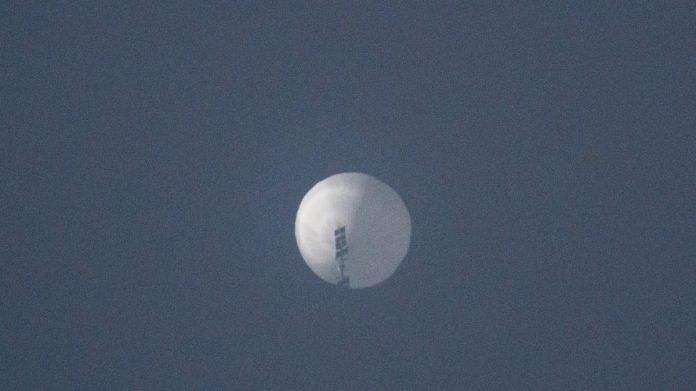New Delhi: Why not shoot down the purported “spy” balloon? That’s the question that’s been weighing on people’s minds since a “Chinese spy balloon” roughly 34 cubic metres in size was spotted over the United States Friday. The answer, it turns out, isn’t simple.
Ever since the alleged spy balloon was spotted, several people have suggested the use of F-22 Raptor stealth aircraft to shoot down the balloon, which is currently flying at over 60,000 feet.
But other military researchers claim that such spy airships may be hard to shoot down due to their “inherently survivable nature”. While researchers say hitting the ship is easy, controlling its descent proves to be a challenge.
Rebecca Grant, a national security analyst and aerospace expert at IRIS Independent Research, told Newsweek, “It’s no problem really to shoot at (the balloon). Consider that a fighter could use an air-to-air missile if it needed to be precise—and if the balloon is low enough, it’s possible to use a gun as well.”
“But the problem is when you puncture it, how long does it take for the gas to flow out, and as the balloon deflates, how long does it take, where does it go— so the issue is precisely predicting and controlling the potential crash sites,” she added.
A 2009 research paper on stratospheric airships by Kevin Massie, a major at the United States Air Force, stated that even when hit, “they (stratospheric airships) will not quickly fall from their position”. “Balloons of this kind have an internal pressure of less than one pound per square inch. Holes created by damage result in slow leaks and slow descents”, said Massie in his 2009 paper.
He also cited an example from 1998, in which Canadian F-18s shot at a wayward 100 metre weather balloon, which after being hit by 1,000 rounds managed to stay airborne for another six days.
Massie further added that such airships “are difficult to detect, engage, and destroy”. As they run on inert gases like helium, produce very little heat and have a minimal infrared signature, they “are inherently stealthy”, according to the military researcher.
“Because of their non-metallic structure and covering and a lack of rough edges, (stratospheric airships) present a minimal radar return. Even with their immense size, (they) are difficult to see optically at high altitude,” said Massie in his 2009 paper.
Over the last decade, the American capability to detect such objects has improved greatly, after the balloon was spotted from a commercial airliner and is continuously being monitored according to Pentagon Press Secretary Brig. Gen. Pat Ryder.
Also Read: Spy balloons were designed to gather weather data, but they’re a hot military favourite
History of spy airships
Such technology is believed to have been in use since the 18th century, founded by the French Aerostatic Corps in 1794 for reconnaissance. It was later also used in the American Civil War in the 1860s to perform manned, aerial reconnaissance on enemy movements.
In 2021, the US army was reportedly developing high-flying balloons “that can fly above enemy territory to provide data, (with) potentially jamming or disruption capability’” according to Army Times. Designed to operate at 60,000 feet or above, the High-Altitude Extended-Range Long Endurance Intelligence Observation System, or HELEIOS, was aimed at allowing the army to cover vast spans of land and perform targeted attacks in case of future conflicts.
Today, such spy airships can be equipped with a range of technologies, from Geospatial intelligence for mapping to electronic intelligence to intercept and analyse signals from foreign military and other systems.
What next
Follwing the incident, US Secretary of State Antony Blinken, who was scheduled to leave for Beijing Friday night as a part of an important diplomatic visit to China, — the first in many years — has been cancelled until further notice.
While the Chinese government released a statement of “regret”, noting that the airship is “civilian in nature and used for meteorological and other scientific research”, the White House has called the presence of the balloon in American airspace “a clear violation of our (US) sovereignty”.
In response, Beijing Saturday said that US media and politicians are “hyping up” the balloon incident and are using it to ‘attack and smear China’.
The Chinese Foreign Ministry spokesperson said in a media briefing said, “We have no intention to violate and have never violated the territory or airspace of any sovereign country. Some politicians and media in the US have hyped it up to attack and smear China. The Chinese side is firmly opposed to that”.
(Edited by Uttara Ramaswamy)
Also Read: Blinken calls off Beijing visit after Chinese spy balloon spotted. PRC may have used it on India



